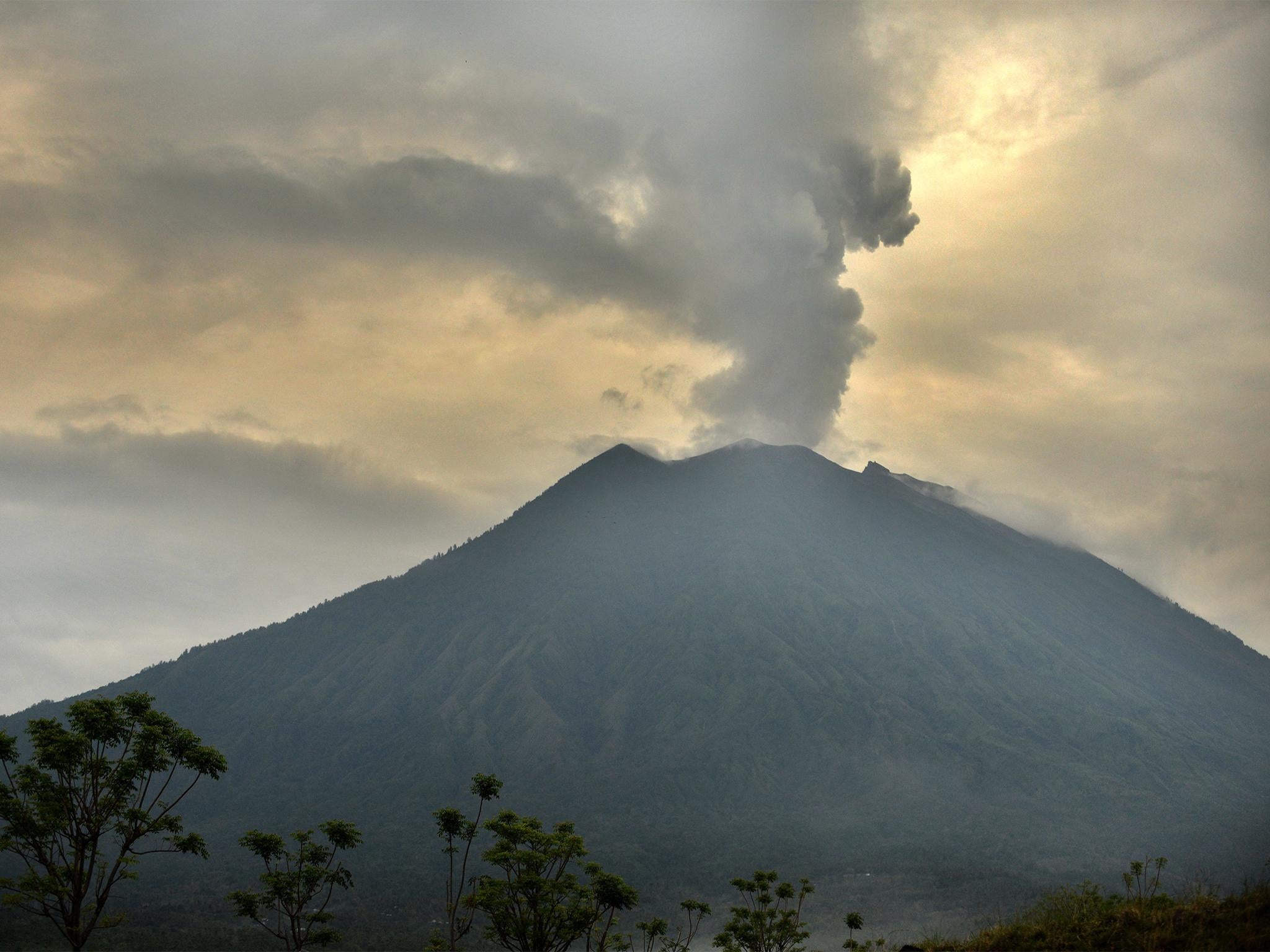Bali volcano latest: Flights resume to Indonesian island as Mount Agung appears to calm down
Airport schedules near-normal as tourists are told it is safe to return, despite highest alert level

Your support helps us to tell the story
From reproductive rights to climate change to Big Tech, The Independent is on the ground when the story is developing. Whether it's investigating the financials of Elon Musk's pro-Trump PAC or producing our latest documentary, 'The A Word', which shines a light on the American women fighting for reproductive rights, we know how important it is to parse out the facts from the messaging.
At such a critical moment in US history, we need reporters on the ground. Your donation allows us to keep sending journalists to speak to both sides of the story.
The Independent is trusted by Americans across the entire political spectrum. And unlike many other quality news outlets, we choose not to lock Americans out of our reporting and analysis with paywalls. We believe quality journalism should be available to everyone, paid for by those who can afford it.
Your support makes all the difference.Gushing ash from Bali's Mount Agung volcano has dissipated into a wispy plume of steam, and Australian airlines that cancelled some flights to the Indonesian resort island at the weekend have returned to near-normal schedules.
Indonesia's disaster mitigation agency said on Monday the volcano remains at its highest alert level but most of Bali is safe for tourists.
The exclusion zone around the volcano still extends six miles from the crater in some directions. More than 55,000 people are living in shelters.
Airlines Jetstar and Virgin Australia, which cancelled flights over the weekend even as the ash cloud shrank dramatically, said they were resuming services on Monday.
The region's volcanic ash monitoring centre in Darwin, Australia, has stopped issuing advisories for Agung, reflecting that it's currently posing no threat to aircraft. It would resume advisories if there's another eruption.
Tens of thousands of tourists were stranded when ash closed Bali's international airport for nearly three days last week.
Indonesian government volcanologists say Agung's crater is about one-third filled by lava and there is still a high risk of more eruptions.
The volcano's last major eruptions in 1963 killed more than 1,100 people and it was active for more than a year.
David Boutelier, a geologist at the University of Newcastle in Australia, said the chance of a violent explosion is still "very high" but possibly not as high as several weeks ago because pressure is being released.
Associated Press
Join our commenting forum
Join thought-provoking conversations, follow other Independent readers and see their replies
Comments